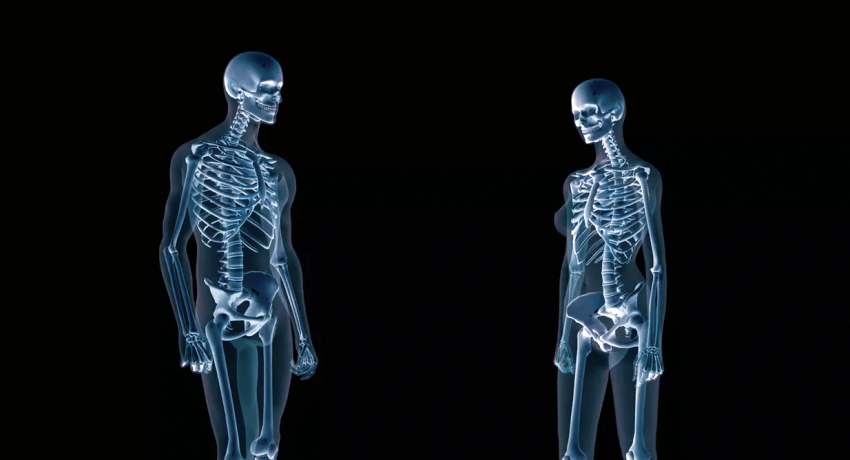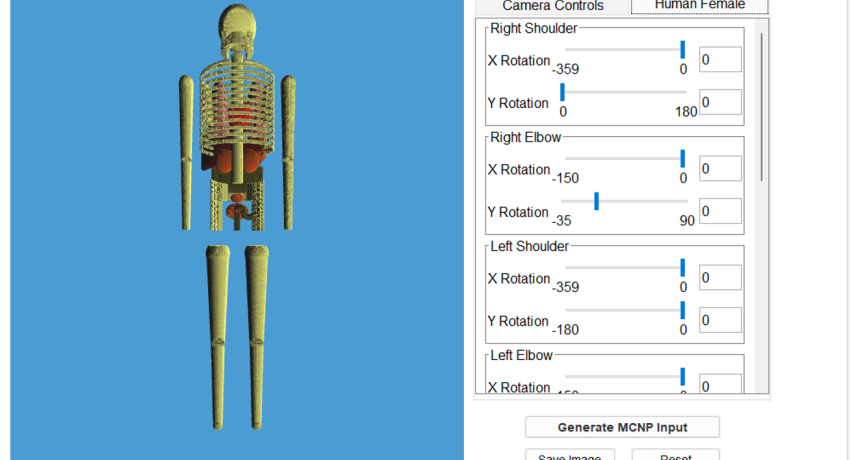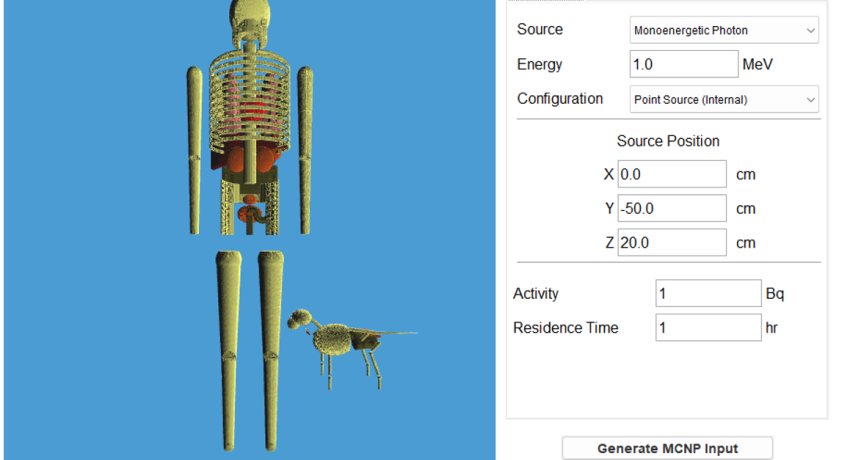Phantom with Moving Arms and Legs
The PiMAL code is a graphical user interface with pre-processor and post-processor capabilities which assists users
in developing MCNP input decks and running the codes. It allows users to easily generate quantitative figures of merit regarding positioning arms and legs in difference geometries. PiMAL software is considered an efficient and accurate tool for performing dosimetry calculations for radiation workers and exposed members of the public.
- Adult phantom based on the ORNL-University of Florida adult phantom.
- Differs from the ORNL-UF phantom in that the arms and legs are separated from the torso, and can bend at the joints (shoulder, elbow, hip, and knee).
- Using primarily to accurately simulate the exposure configuration in cases involving unplanned exposures of workers.
- Arms and legs are bent by using sliders, one for each joint on each arm and leg.
- The phantom is designed to run as input to the MCNP radiation transport code.
- PiMAL provides a set of predefined source configurations and radionuclides.
- The user may modify the MCNP input files to define any desired source configuration.
The latest update introduces scalable veterinary phantoms, ranging from a small feline (cat) to a medium canine (dog) and up to a large equine (horse). These enhancements allow for precise dose calculations to humans from radiation sources (radiopharmaceuticals) within one or more organs of the veterinary patient. This advancement supports veterinary practices in safely releasing treated animals to their owners while ensuring proper radiation safety measures.



